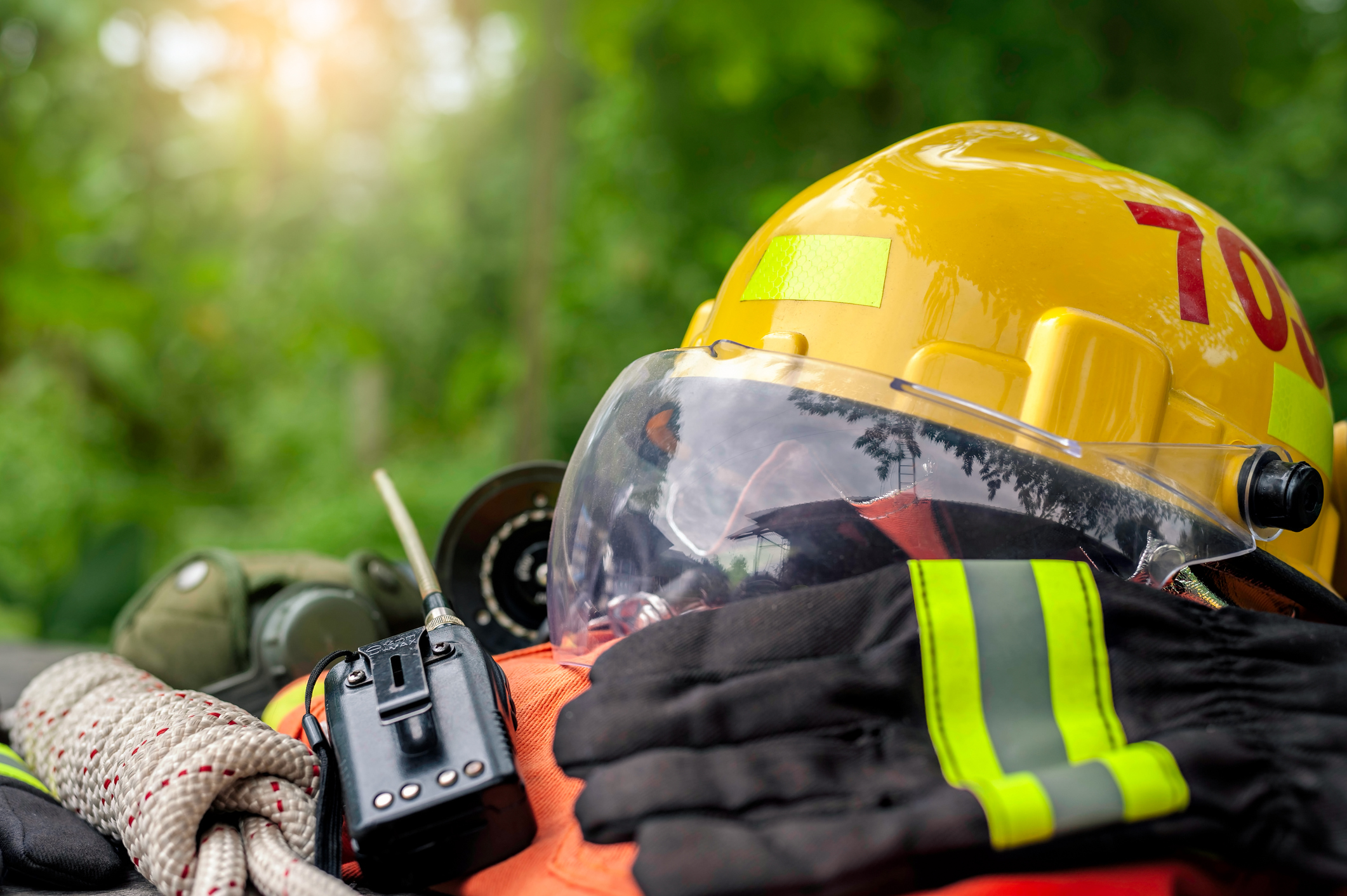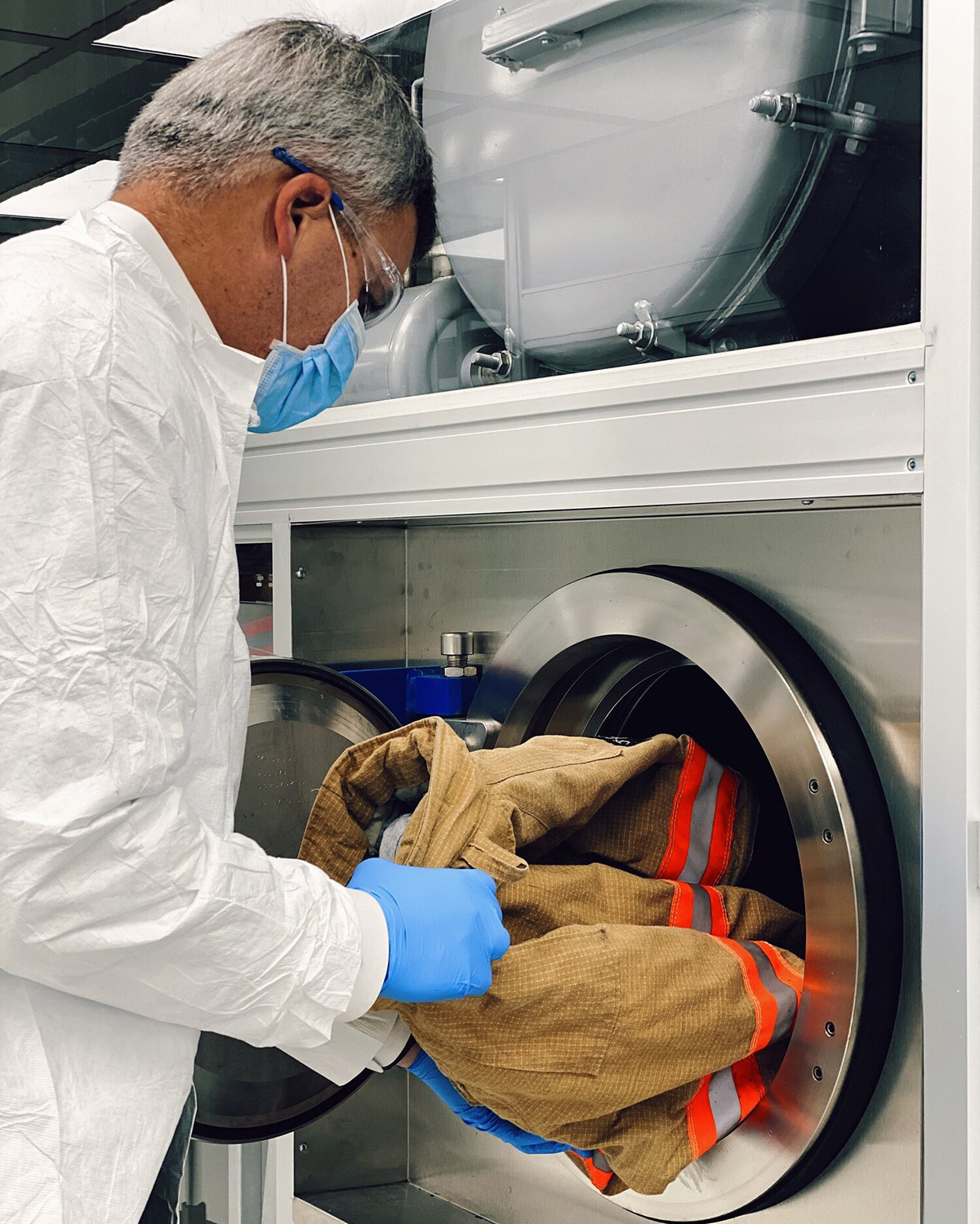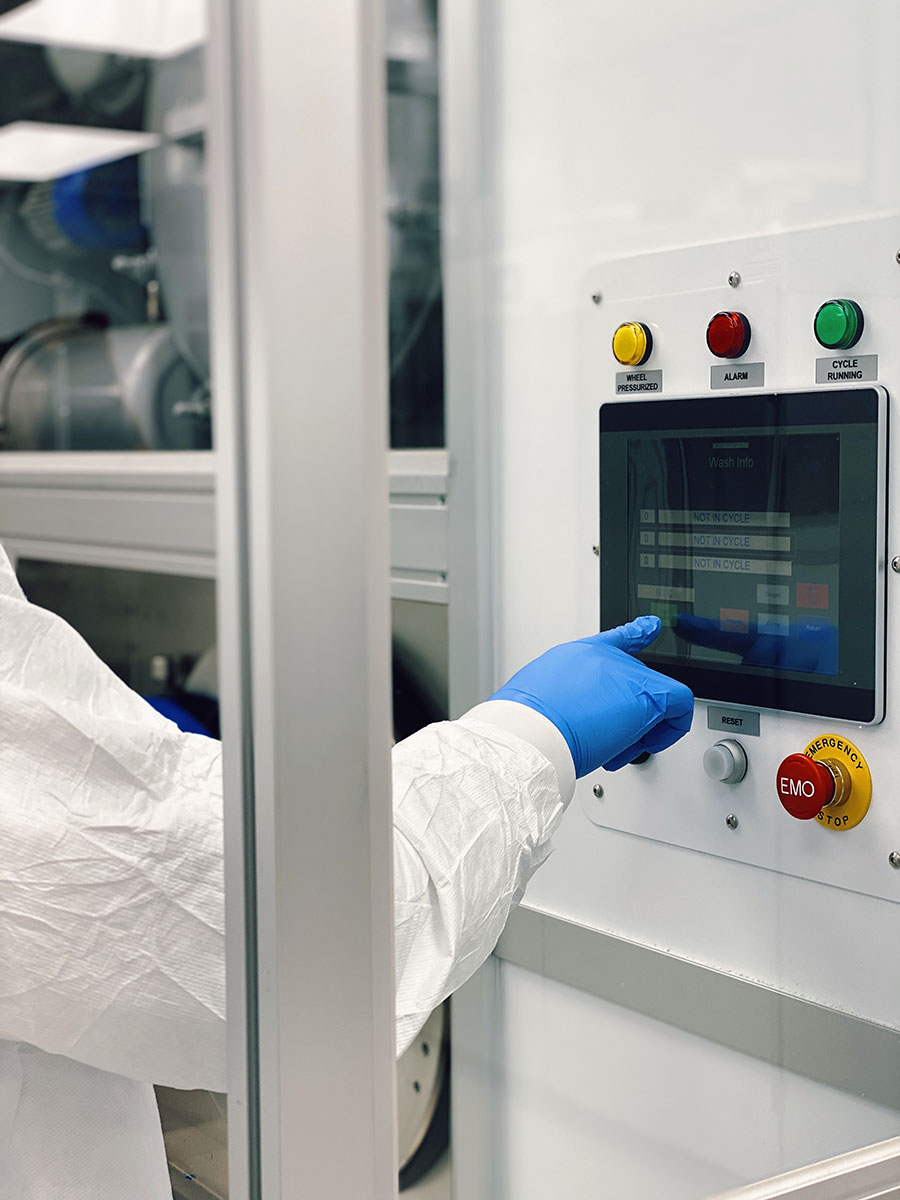By: Emergency Technical Decon Team
When most people think about decontaminating firefighter turnout gear, they picture jackets, pants, and boots going into industrial washers after a call. But what about the gear closest to the skin? Helmets, hoods, and base layers are often overlooked in the decontamination process—yet they’re among the most vulnerable to contamination and the most critical to firefighter health.
The Hidden Threat
While coats and pants receive the bulk of decon attention, studies have shown that the areas of the body most prone to toxic absorption—such as the neck, jawline, wrists, and groin—are often covered by base layers, hoods, and gear components that don’t get routinely cleaned. These items absorb sweat and trap particulates during operations, creating a dangerous blend of moisture and toxins against the skin.
Helmets, often considered durable and weather-resistant, can become contaminated with hydrocarbons, soot, and chemical residue over time. Without regular cleaning, these contaminants build up in foam liners, chin straps, and inner surfaces that make frequent contact with the firefighter’s face.
Why Routine Cleaning Isn’t Enough
Traditional washing techniques may fall short when it comes to these items. Base layers and hoods are highly absorbent, and standard laundering may not remove deeply embedded toxins. Helmets often get wiped down on the outside—but rarely receive the deep, interior decon that eliminates accumulated VOCs and heavy metals.
Advanced decontamination solutions, like Liquid CO2+, offer a safer and more effective alternative. This technology penetrates fibers without damage, removing over 84% of harmful PFAS and other toxic contaminants. It’s non-toxic, non-water-based, and ideal for sensitive gear that can’t be traditionally washed.
The Standards Are Changing
With the adoption of NFPA 1850, departments are expected to take a more holistic and standardized approach to gear maintenance and decontamination. This includes thorough cleaning of all PPE components—especially those that are in direct contact with the skin.
Departments that fail to include helmets, hoods, and base layers in their routine decontamination cycles may violate emerging best practices and, more importantly, may be putting their personnel at unnecessary risk.
ETD’s Role in Full-Spectrum Decon
At Emergency Technical Decon (ETD), we make it easy for departments to prioritize the full spectrum of firefighter protection. Our facilities are equipped to handle full gear ensembles—including sensitive items like helmets, hoods, and base layers—using advanced, patented Liquid CO2+ cleaning systems.
We believe cancer prevention starts with details. That’s why we inspect, track, and treat every component of turnout gear with the same level of care. Because when it comes to firefighter safety, nothing should be overlooked.
Want to learn more about how ETD can help your department build a complete decontamination strategy? Contact us or schedule a service pickup today.



